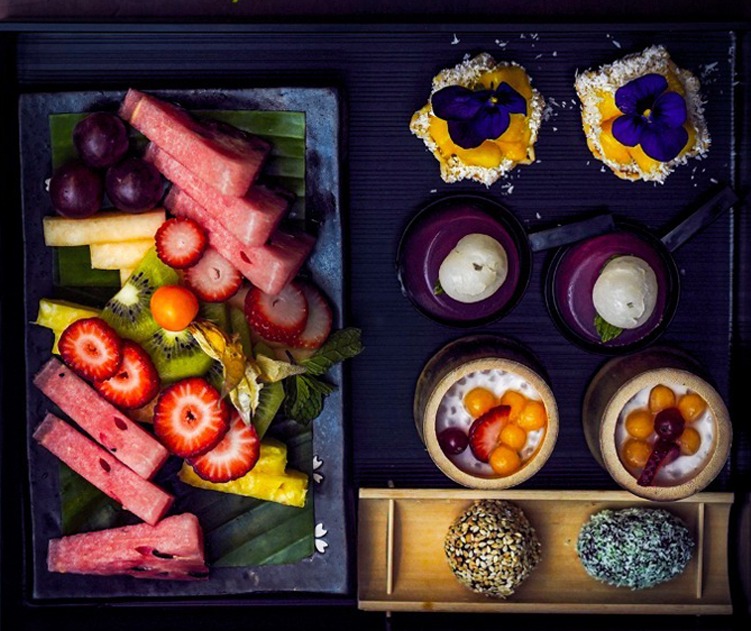Food presentation has always been an important aspect of dining, and it’s even more crucial in Pan-Asian cuisine. The presentation of a dish in Pan-Asian cuisine is not just about making it look pretty; it’s about telling a story and creating an experience for the diner. The art of plating in Pan-Asian cuisine is all about balance, harmony, and beauty. Here are some presentation techniques used in Pan-Asian cuisine that can help elevate your dishes to the next level.
Plating Methods – Pan-Asian Cuisine
Consider plating to be an art form in which you are the artist, the plate is your canvas, and the food is your instrument. To improve your craft, master the following plating techniques.
1. Plate Presentation Techniques
The first step in food presentation is choosing the right plate for your meal. Consider the following when selecting the best plate for your food presentation:
Plate Size –
Your plate should be large enough to let your food stand out yet small enough that your amounts do not appear little.
Light vs Dark Plates –
The colour of a dish can either increase or suppress appetite. Because red stimulates the appetite, offering appetizers on red plates encourages people to order larger entrees and sweets. Blue tableware is unappealing to professional platers since there are few naturally occurring blue meals.
Plate Color –
The colour of a dish can either increase or suppress appetite. Because red stimulates the appetite, offering appetizers on red plates encourages people to order larger entrees and sweets. Blue tableware is unappealing to professional platers since there are few naturally occurring blue meals.
Restaurant Style –
Classic Chinese dinnerware complements traditional plating styles if you own a fine dining establishment. A fashionable gastropub should invest in one-of-a-kind plates with unusual forms that allow for maximum plating inventiveness.

Pan-Asian Cuisine
2. Food Arrangement Techniques
The arrangement of your food plays a crucial role in determining the aesthetic tone, structural integrity, and flavour dispersion of your meal. Below are a few of the most essential food preparation methods:
The Rule of Thirds –
The rule of thirds in cooking states that the main point of your food should be positioned on the left or right side of the plate, rather than in the centre. Use the rim as your frame, and accent the focal element of your plate using white space (s).
View Your Plate as a Clock –
Consider the face of a clock as you arrange your materials. Your protein intake is recommended to be within the range of 3 to 9, while your starch and carbohydrate consumption should fall between 9 and 12. Additionally, it is recommended that your vegetable intake should be between 12 and 3.
Don’t Overcrowd Your Plate –
Focus on one ingredient to keep your design simple (usually protein). Having a focal point allows you to arrange your supporting pieces to match your main item.
Moist Ingredients First –
Plate damp components first and cover them with other foods to keep them from running. You can, for example, slant sliced meat against mashed veggies.
Create Flavor Bites –
“Flavor bites” refer to the act of combining all the ingredients of a particular cuisine into a single mouthful. Flavour bites are important for quality plating because they appeal to both the sight and the taste buds.
Mix Textures –
Contrasting a silky vegetable puree with crisp onion straws or sprinkling crumbled blue cheese on top of steak results in intriguing texture combinations that are standard in high-end cooking.
3. Garnishing Techniques
Formerly, chefs would casually toss a bit of kale and an orange slice onto each meal. Nevertheless, these garnishes added little to the dish and were eaten by a few people. To generate taste bites, modern garnishes pair wisely with the dish. To perfect the final step of food presentation, use these garnishing techniques and recommendations.
Edible Garnishes –
Remember that garnishes should always be edible and improve the dish as you finish plating. To determine whether a garnish is appropriate, examine whether you’d like to eat it in the same bite as the cuisine it’s accompanying.
Intentional Placement –
Never put garnishes in one area of the plate. Instead, delicately sprinkle them to add colour or texture. Garnish with pomegranate seeds on top of a delicate fillet of fish nestled in a curry sauce.
Less is More –
Never cram too much food onto your plate only for the sake of a garnish. If your dish is already full, a sprinkling of flavour-infused vinegar or oil will improve the taste and presentation of your cuisine without crowding it.
Garnishes to Avoid –
Raw herbs, large chunks of citrus, and anything with a strong odour should be avoided as garnishes. Avoid garnishes that take a long time to apply as well.
Conclusion:
In conclusion, the art of plating in Pan-Asian cuisine is all about creating a visually appealing and memorable dining experience for the diner. By using techniques like different textures, colours, edible flowers and herbs, symmetry, and unique serving ware, chefs can elevate their dishes to the next level. These presentation techniques not only make the dish look more beautiful but also enhance its flavour and overall dining experience.




